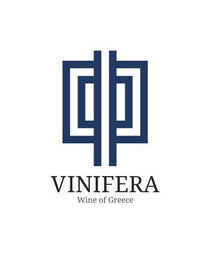Making wine is easy, but preserving it and allowing it to mature requires time and forethought. Maturation requires a society of a developed aesthetic sense, who treats the wine as a luxurious item and not as an intoxicant or a disinfectant product.
It is not a surprise that the first time that we hear about matured wine was through the noble circle of the Homeric poems (i.e. Iliad and Odyssey). It is only matured wine which is served to honoured guests and as a special gift (Odyssey II.340-3 / III.390-2). Ancient Greeks' matured wines were strong (>15alc.) and sweet. In order to increase the sugar levels of the grapes, they've used the passito method, which requires to dry the grapes after their collection. Those wines were probably closer to the current Italian Recioto type of wines. The top quality wines were matured in high-graded airtight Amphorae (i.e. pottery containers).
During the Roman period a matured wine was a very luxurious item, which none but the civilised elite could afford it. Barrels were introduced that period (ca. 50BC) but only for transportation purposes (Strato Geography V.1.8) since they were lighter and less fragile than amphorae. However, they were still using amphorae for aging the wine as barrels are not airtight, produce woody flavour and require very high level of hygiene. Those were formidable reasons for the Romans to mature their wine in barrels.
Since drinking matured wine is a mark of civilisation, it is not a surprise that during the dark ages, matured wine was a thing of the past. It was the late seventeenth century, with the introduction of bottles and corks, that maturation of wine became again available. Until nowadays, the wines are allowed a period in barrel but they are transferred into bottles for further ageing.
Oak Barrels are watertight but not airtight. Small amount of oxygen reacts with the wine, which softens the wine tannins and increases the complexity of the flavour compounds. The oak itself also extracts tannins and flavours to the wine and provides more structure to the red wines and more textural complexity to the whites. Barrel maturation also encourages the clarification of the wine and simultaneously deepens and stabilises its colour.
Small size barrels, such as Borderaux’s barriques (225 ltr) or Burgundy’s pieces (228 ltr), have greater oxidative effect than the larger ones, such as Alsace’s Foubres (up to 2000 ltr), and the wine is rarely kept there for more than 2 years. A more concentrated and high quality wine can better support new oak flavours. Winemakers nowadays use oak vessels of different ages and sizes to increase the complexity of their blend.
The origin and the production of the oak barrels are also of paramount importance. The oak is usually either European (Quercus Petraea/ Sessiliflora/ Quercus robur) or American (Quercus alba). The former is giving more toasty and clove flavor to the wine while the latter more vanilla and smoke. In comparison, the European oak is also tighter grained, highly aromatic and extracts less barrel tannin. However, more importantly is the producer of the barrels. How they cut, dry, assemble, shape and toast the barrel has a huge impact to the wine.
Hygiene in the winery is essential for maturing wine. Wine can be ruined by taint wood from bacteria, yeast and molds from the barrel. Once filled it should be stored to a room with a temperature control between 10C to 18C and humidity over 75%. Finally racking should take place every 3-4 months. Racking is the process that once the gross lees have settled in a deposit, then the wine can be slowly and gently pumped into a different vessel leaving the sediment behind. During maturation the wine will continue to produce deposits of fine lees and the clarity can be improved by repeated rackings. Many fine wines use racking as their only clarification method.
Vinifera’s philosophy is that the wine needs a barrel but the latter shouldn’t overpower it. We aim to produce wines which last through the years and be enjoyed in any cultured social activity.
As our grandma was always saying wisely: "The wine should be there for the guest and not the guest for the wine".
